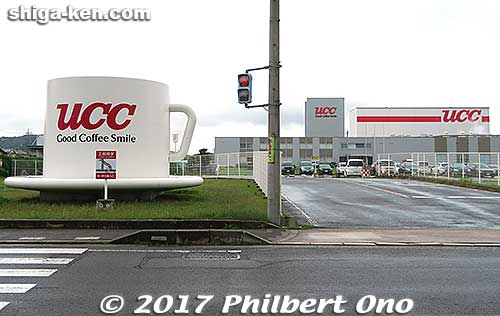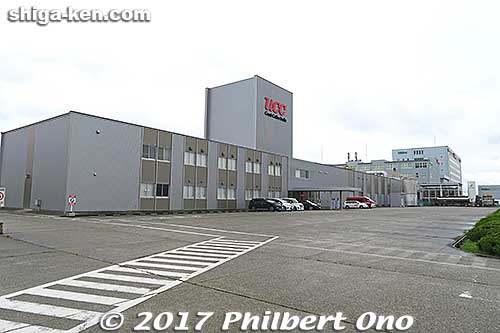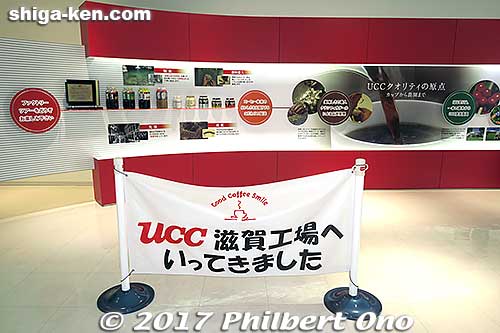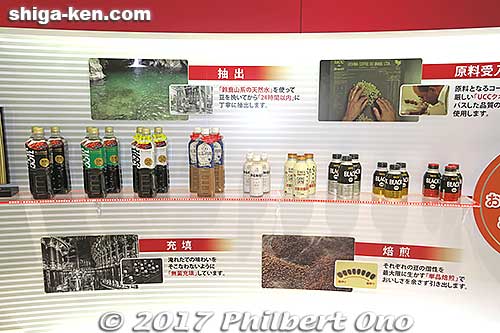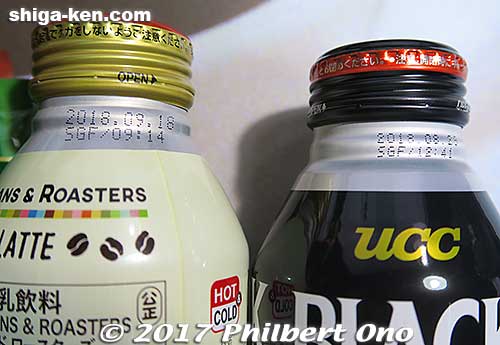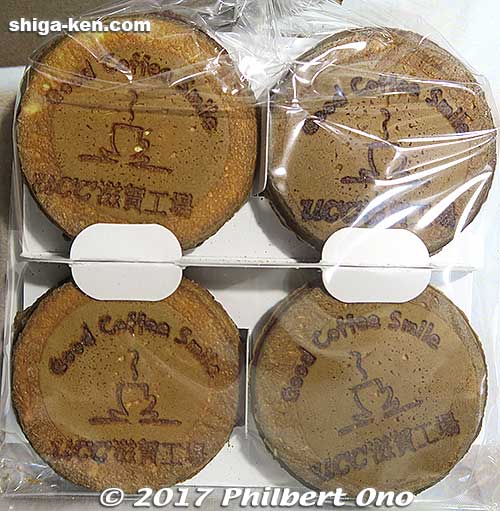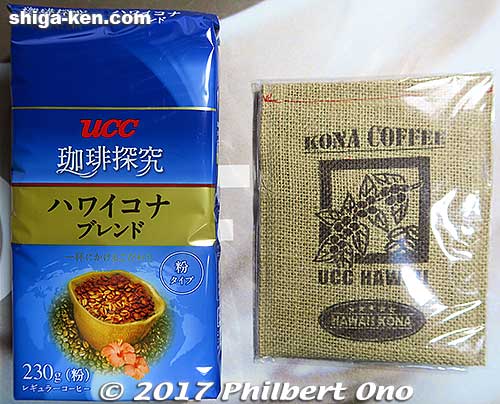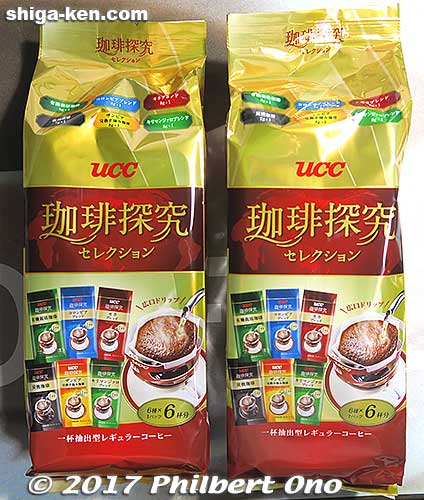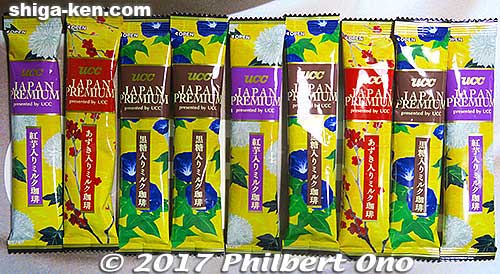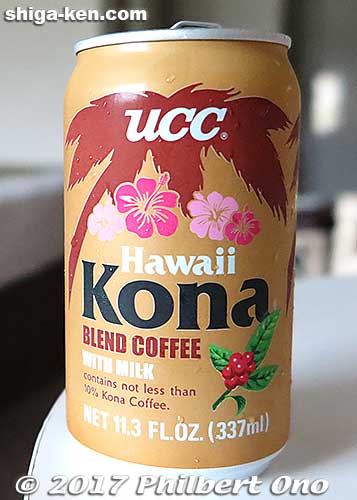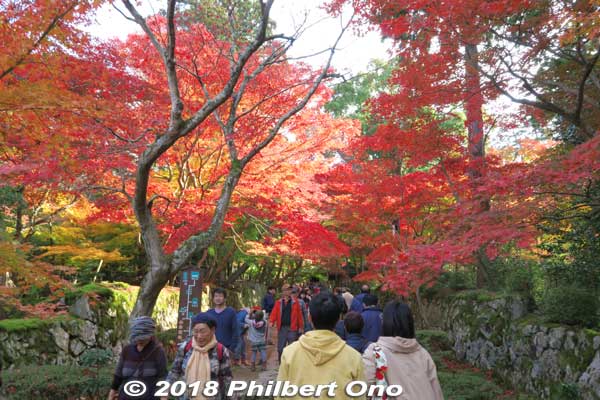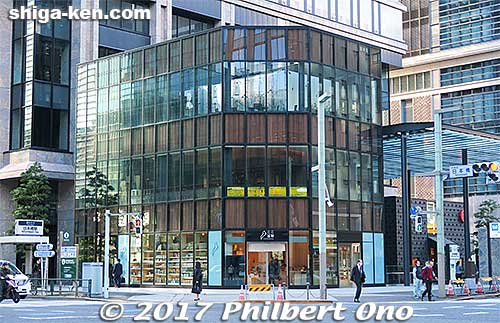Note: As of July 2023, UCC Shiga Factory tours continue to be suspended due to COVID-19. See the Japanese website for any updates.
The UCC Shiga Factory (UCC滋賀工場) in Aisho, Shiga Prefecture (near Ohmi Railways Echigawa Station) started full-scale operations in March 2013 to make regular coffee in plastic bottles (930 ml) and cans (300 ml and 400 ml) with screw-on caps. It uses the clean water from the Suzuka mountains to make the coffee.
UCC is a very famous coffee brand in Japan synonymous with canned coffee since they invented and popularized canned coffee in 1969. “UCC” stands for “Ueshima Coffee Company” named after Ueshima Tadao who founded the company in Kobe, Hyogo Prefecture in 1933. Coffee was one of the Western things that came to Kobe and he fell in love with the drink with his first cup. UCC’s innovative canned coffee got its big break at Expo ’70 in Osaka. With all those people drinking UCC canned coffee milk at the expo, it was a major PR coup.
In 1989, they started operating their own coffee plantation (UCC Hawaii) in Kona, Hawaii which also conducts tours for the public. They also have a coffee farm in the famous Blue Mountains of Jamaica.
UCC Shiga Factory Tours
The UCC Shiga Factory conducts free factory tours twice a week on Tuesdays and Thursdays. They offer two identical tours on both days starting at 10:00 a.m. and 1:00 p.m. The tour is about 80 min. long and up to 22 people can join the tour. Reservations are required at the UCC website (in Japanese). The reservations page shows a calendar indicating when space is available. An “x” means no spaces are available. A number indicates the number of spaces still available on that tour. You can make reservations up to three months in advance and it must be made by 4:00 p.m. the day before the tour.
They do not allow pets, baby strollers (can be stored), and wheelchairs (due to the stairs). Kids younger than jr. high school need to be accompanied by an adult. If there are enough foreigners, I was told that tours in English are also possible.
You have to get to the factory at least 15 min. before the tour starts. You can enter the factory up to 30 min. before the tour starts and enjoy a cup of coffee while waiting. If you come by car, parking is available in front of the factory. If you come on foot, follow the pedestrian path (follow the signs) toward the left of the giant coffee cup. There is a security gate where they will ask for your name. (In Japanese, say “kengaku” which means factory tour.)
When you enter the building, they will greet you and ask for your name. There is a lobby where you take off your shoes and wear house slippers. The lobby wall has a display of the products made at the factory. Photography is allowed only in this lobby (and outside). Photos and videos are not allowed anywhere else in the factory. Our friendly factory guides were women in red uniforms.
From the lobby, we were told to go upstairs to the “Theater Room” which is a nice coffee lounge with chairs, tables, small gift shop, and a video screen. As we waited for the tour to start, we were served free UCC coffee and we could choose which coffee to drink. The room also has a showcase tracing the company’s history with product displays. You can see how the UCC coffee can design has evolved since 1969. The tour started with a short video in Japanese introducing the company and its coffee farms in Jamaica and Kona, Hawaii.
Then we left the room and entered the factory after saying the “magic password” to open the factory door. We walked through a corridor with glass windows on both sides and saw mostly metal pipes going in all directions and large vats. One stop was in front of the production line where they fill coffee cans (800 cans of coffee per minute). Another stop was at a line where plastic PET bottles were being transported. Those 1-liter PET bottles were actually made from small test tube-size plastic pieces (called “preforms”) that is expanded and inflated at the factory into regular-size PET bottles. Amazing, I had never wondered how PET bottles were made until then. It’s a lot easier and cheaper to transport those small preforms to the factory than ready-made bottles which take up a lot more space. They also showed us the very thin films used for the PET bottle labels.
Unfortunately, the factory production lines were not operating when we were there. Apparently, their production quota had been reached so they weren’t operating. It wasn’t a 24/7 operation. So we didn’t see anything move. No noise, and almost no people. Looks very automated.
We also had a live video chat with a quality control inspector working in the quality control room. He explained how he samples the coffee through smell and taste to ensure product quality. I asked him (jokingly) how he prevents overdosing on caffeine while on the job. He said he doesn’t sample enough coffee to overdose on caffeine. He only samples a few cups of coffee worth per day for his job. (He says you need to drink tens of cups of coffee in a day to overdose on caffeine.)
Next, we were led to the “Coffee-Tasting Room” where we sat for a coffee-tasting session. We each had two tiny cups of different coffee to compare regular coffee and coffee made with a concentrate. They definitely smelled and tasted different. They explained how each type of coffee is made and how it affects the taste.
Lastly, we were led back to the “Theater Room” lounge where they introduced their latest coffee products and their little gift shop on a small shelf. If you buy something at the gift shop, they give you a door prize like packets of instant coffee. And if you buy at least ¥1,000 of gifts, they give you two free bags containing six instant coffee packets. Lots of freebies and there wasn’t anything expensive to buy. We also had time to taste UCC’s different canned and bottled coffee. I tasted them all and noticed differences in the taste, sweetness, milkiness, and smoothness. I concluded that coffee in small cans tasted better than the coffee in large PET bottles.
Since the factory is still new, the place is nice and clean and the staff were friendly and nice. After the tour if you have time, I recommend also visiting the Omi Jofu Traditional Crafts Center down the road and try hands-on weaving.
Also see UCC’s photos of the Shiga factory here.
The factory is a 15-min. walk from Echigawa Station on the Ohmi Railways. Or 15 min. by taxi from JR Notogawa Station.
